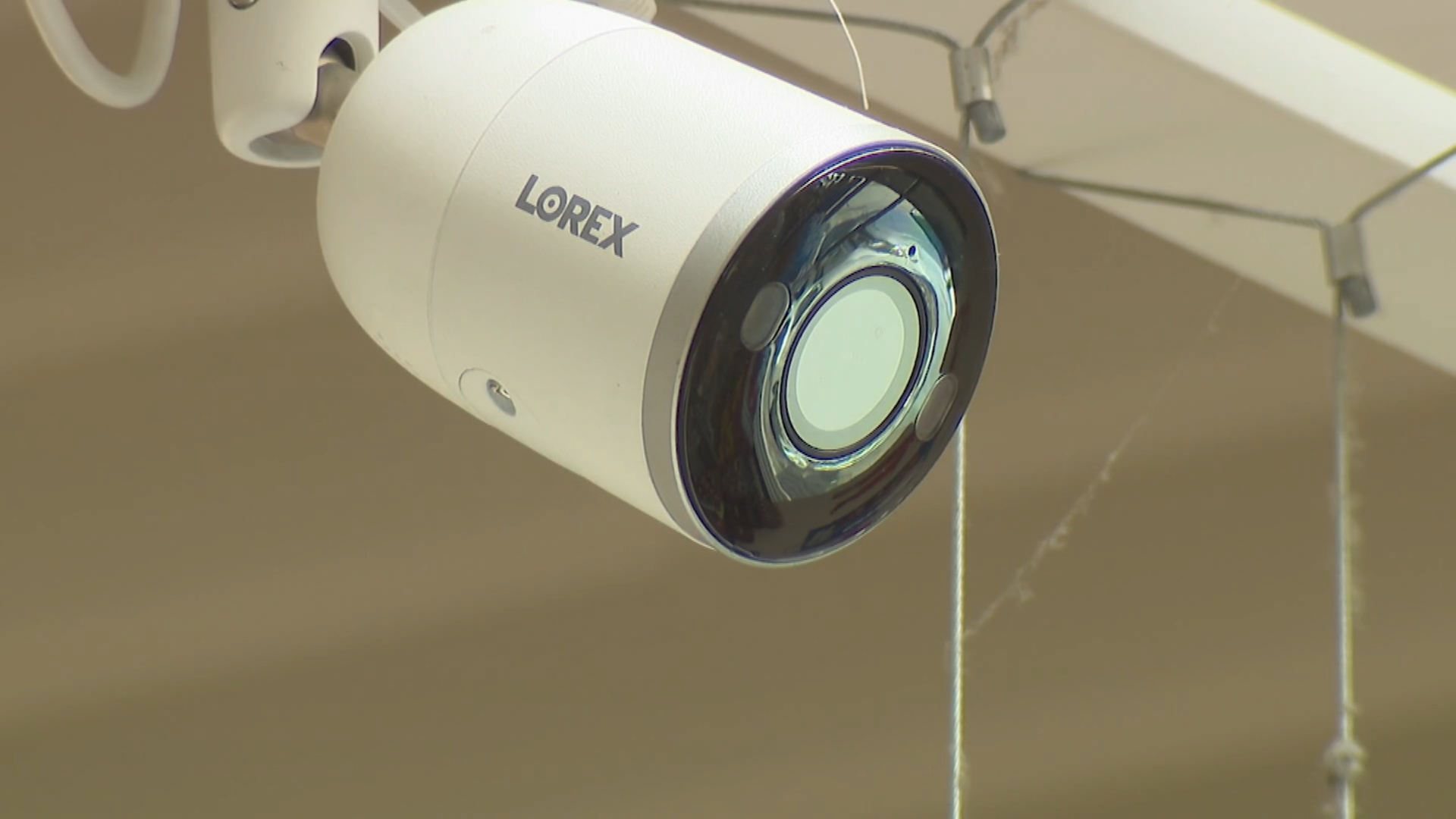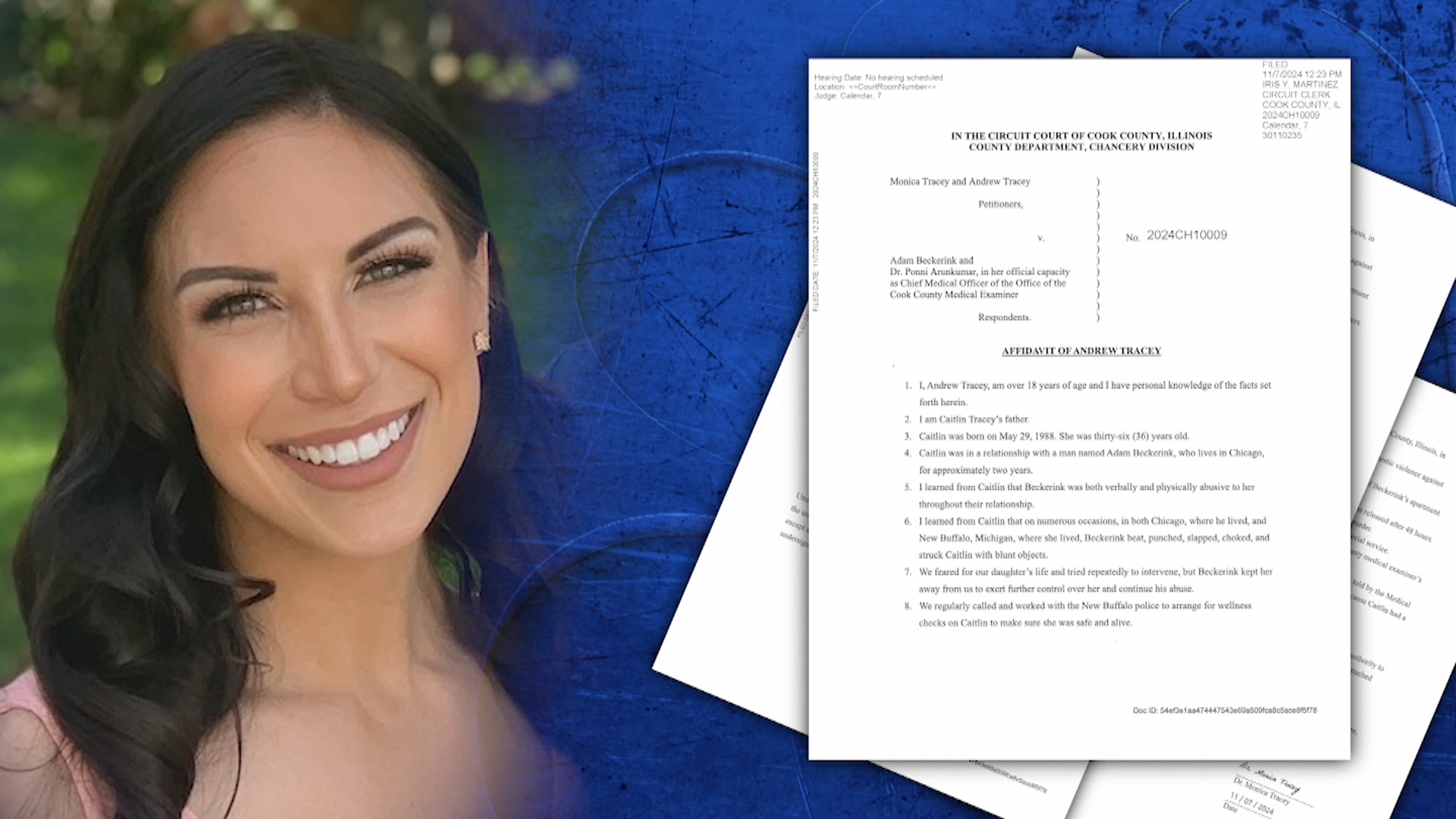Editor's Note: Live coverage of the eclipse from the path of totality begins in the player above starting at 7 a.m. Tune in for live totality starting at 1:55 p.m.
Don't miss it: In the afternoon of April 8, a total solar eclipse will travel across the country, with some experts describing the phenomenon as "the greatest solar eclipse across the U.S. in our lifetime."
According to NASA, the eclipse will begin around 1 p.m. CT. The shadow of the moon will start out moving slow, across Texas, up through Arkansas and then southeastern Missouri, southern Illinois and into Indianapolis. From there, it will travel through Ohio and up to the northeast, with 13 states in total appearing in the eclipse's path of totality.
Places in the path of totality, like Carbondale -- which was also in the eclipse's path of totality in 2017 -- will see the moon will briefly cover the sun entirely.
In Chicago, around 94 or 95 percent of the eclipse will be visible.
MORE: 3 things experts say not to do during the 2024 Total Solar Eclipse
"Even though it’s a partial eclipse over Chicago, the skies are still going to get darker, with more than 90% of the sun getting covered," NBC 5 Meteorologist Kevin Jeanes said. "You’ll notice the crescent shape of the sun in all of the shadows and through your phone camera lens. It feels ominous but it’s a very exciting moment."
Local
According to the NBC 5 Storm Team, there's a good chance early morning clouds will clear Monday, making the partial eclipse visible in Chicago. However, since the region is not in the eclipse's path of totality, glasses will be needed at all times to safely view it.
2024 Solar Eclipse Interactive Map: See where, when the eclipse will be over Illinois
Feeling out of the loop? We'll catch you up on the Chicago news you need to know. Sign up for the weekly Chicago Catch-Up newsletter.
"You must have glasses from Chicago, or you can make a pin hole box to view it," Jeanes said. "That's because it's not safe to look at from a vantage point outside the path of totality. We cannot look at the sun when not its the total eclipse."
How to know if your solar eclipse glasses work
According to the Adler Planetarium, viewing the solar eclipse without proper eyewear can result in irreversible eye damage within seconds, and as your eyes lack the nerve endings to register pain as it's occurring, it'll be too late by the time you know.
Regular sunglasses, even very dark ones, are not safe to view the eclipse.
Outside of eclipse glasses, the following options described by the Illinois Department of Transportation also offer a safe way to see the event.
- Solar filters: If you want to use a telescope, binoculars or camera, do not use them unprotected even if you have safe eclipse glasses. Consult the manufacturer for a proper filter to attach to your device.
- Pinhole viewer: This is a simple, inexpensive way to indirectly view the eclipse. Just take two sheets of white paper (card stock is best) and poke a hole in the middle of one sheet. With your back to the sun, hold the sheet with the hole over the other sheet and adjust them until you see a dot of light. That's the sun! As the moon travels across the sun, a crescent will appear.
With the danger of irreversible eye damage present in the event of viewing the eclipse unprotected, it's critical to ensure that the solar eclipse glasses used are not counterfeit.
But there's no real way to detect real glasses versus counterfeit ones just by looking at them.
"The glasses if they're counterfeit, they may appear fine, because maybe they're dark enough that you can that it appears like you can safely look at the sun. But what you don't know is are they letting through ultraviolet and infrared light. That's the thing that I would worry about the most," Michelle Nichols, director of public observing at the Adler Planetarium said.
Solar eclipse glasses recall: Amazon, Midwestern retailers issue recall for some solar eclipse glasses
Detecting real vs. fake becomes even more challenging when companies tout unproven or inaccurate safety claims.
"Just be careful and don't just assume just because it says safe glasses that that they actually are because anyone can write that," she said.
If you’re still wondering how to tell if your glasses will give you the right protection, here’s a trick, according to experts:
“When you wear the glasses, you should not be able to see anything," Dr. Nina Goyal, an ophthalmologist with Rush University Medical Center told NBC Chicago. "It is a flexible resin with carbon particles infused, the only thing you should be able to see out of these is the orange glow of the sun. Don't use sunglasses, don't layer sunglasses, and don't use smoked glass."
Where to find approved solar eclipse glasses
Experts suggest purchasing solar eclipse glasses through suppliers deemed "safe" by the American Astronomical Society.
The society's list offers links to "selected suppliers of solar viewers and filters that you can be confident are safe when used properly."
"These include companies and organizations with which members of the AAS Solar Eclipse Task Force have had good experience as well as other companies and organizations that have demonstrated to our satisfaction that the products they're selling meet the safety requirements of the ISO 12312-2 international standard," the list states.
The society notes, however, that its list is not exhaustive, and glasses not listed on the site could still be safe. They do not recommend using Amazon, eBay, Temu or other online marketplaces to find lowest-priced options.
"Before you buy a solar viewer or filter online, we recommend that you make sure that (1) the seller is identified on the site and (2) the seller is listed on this page," the society states.
Here are the key take-aways for finding legitimate eclipse glasses:
- When buying eclipse glasses, look for an approved manufacturer on the astronomical society’s website and make sure the glasses have the numbers iso 1-2-3-1-2- 2 printed on the inside.
- You can find the list of Suppliers of Safe Solar Viewers & Filters here.
- If you still have your glasses from the 2017 eclipse, you might be able to reuse them. But that's only if they aren’t bent, torn, or scratched.
Some museums and stores are offering free solar eclipse glasses and viewers while supplies last:
Warby Parker
The online and brick-and-mortar eyeglasses store will be giving away free solar eclipse glasses at all Warby Parker stores while supplies last.
According to Warby Parker, limited-edition, ISO-certified solar eclipse glasses will be available at all stores beginning Monday. Families are limited to two pairs, Warby Parker said.
"Our Customer Experience team will not be able to answer specific questions about the inventory levels of solar eclipse glasses at our stores, and we can’t guarantee that they will be available by the time you arrive," the glasses store said. "If we've run out of solar eclipse glasses by the time you arrive, we'll be able to provide you with an eclipse pinhole projector. With this projector, you can safely observe the solar eclipse through a projection," the store added.
Glasses will be offered through April 8.
Adler Planetarium
During the Planetarium's free outdoor "Eclipse Encounter '24" event, staff will host a variety of free outdoor activities, a post from the Planetarium said. The event will also feature "free solar viewer giveaways" while supplies last.
MyEyeDr.
Eye health services provider MyEyeDr. will be giving out free, expert-approved solar eclipse glasses at more than 400 locations across 20 states while supplies last, a spokesperson said.
Here's where you can find a location near you.
How to create a pinhole box to view the eclipse
If you don't have glasses, one option is to create a pinhole image, Nichols said.
"There are indirect ways of seeing the eclipse," she said. "You can make a pinhole projector and what that means is take an index card, a piece of aluminum foil, something that you can stick a little hole into, line up that hole with the sun and project an image of this on down onto the ground. And that's a way to indirectly view an image of the eclipse."
Just don't look directly through the hole, she said, adding that "that would be putting a focused image of the sun on your eyeball and you don't want to do that."
Can you use your phone, or binoculars?
According to Nichols, using your phone to capture the solar eclipse could also be damaging.
"Don't just point your phone at the sun either because you'll fry your phone camera, so just don't do that either," she said.
She noted, however, that some companies make filters or covers for phone camera lenses to safely capture a solar eclipse.
NASA said viewers should not use solar glasses while trying to view the eclipse through a phone or camera lense.
"Do NOT look at the Sun through a camera lens, telescope, binoculars, or any other optical device while wearing eclipse glasses or using a handheld solar viewer — the concentrated solar rays will burn through the filter and cause serious eye injury," the agency said.
However, those who use a proper filter on their phone or camera lense should be able to safely view the eclipse through those devices.
"When viewing a partial or annular eclipse through cameras, binoculars, or telescopes equipped with proper solar filters, you do not need to wear eclipse glasses. (The solar filters do the same job as the eclipse glasses to protect your eyes)" NASA reported.



